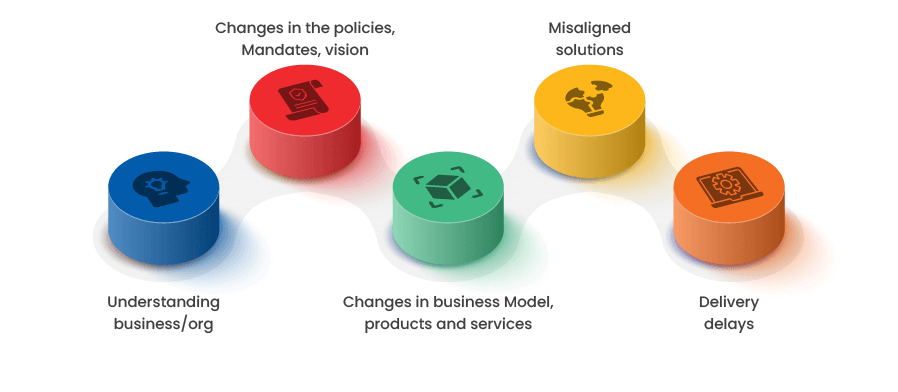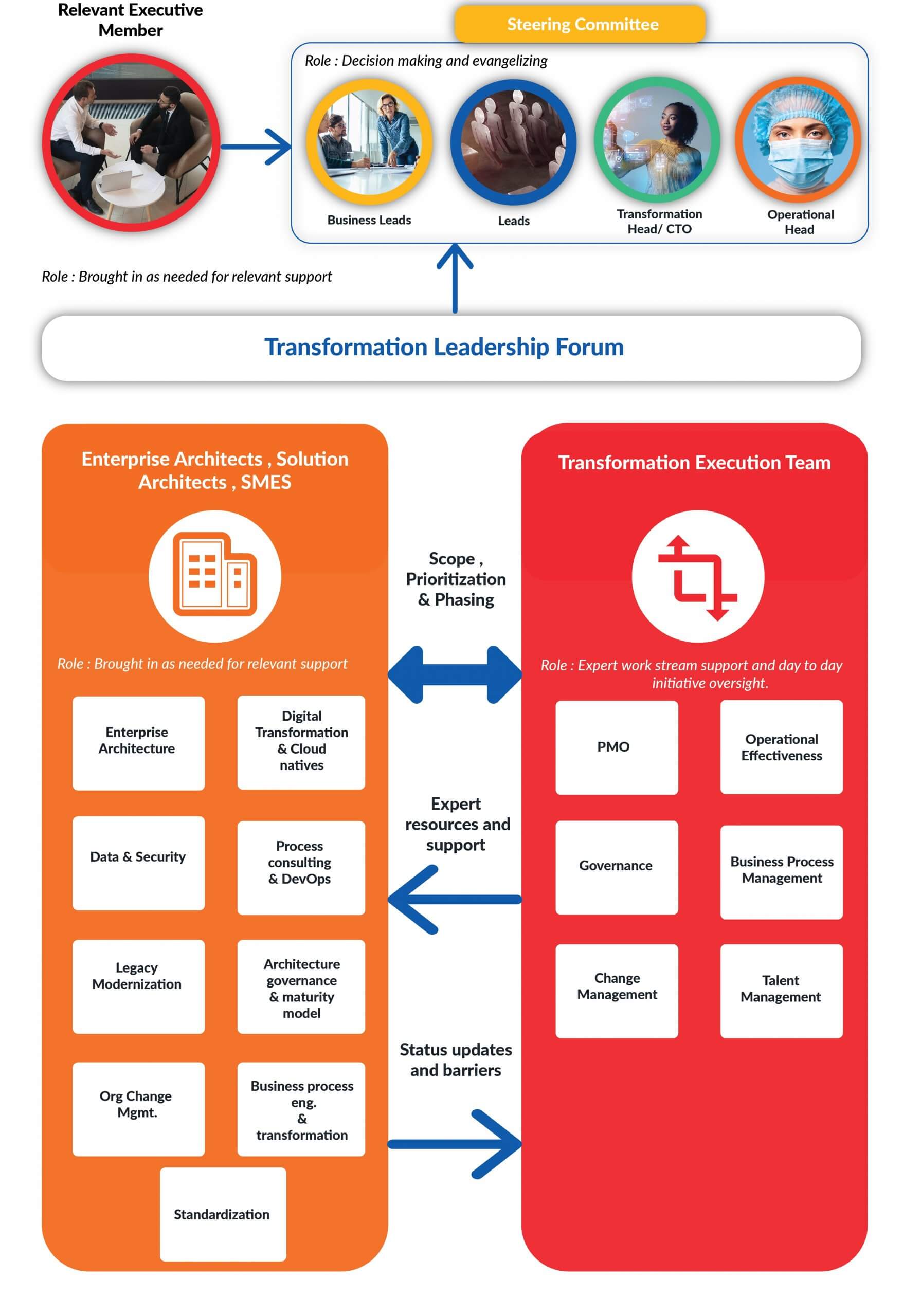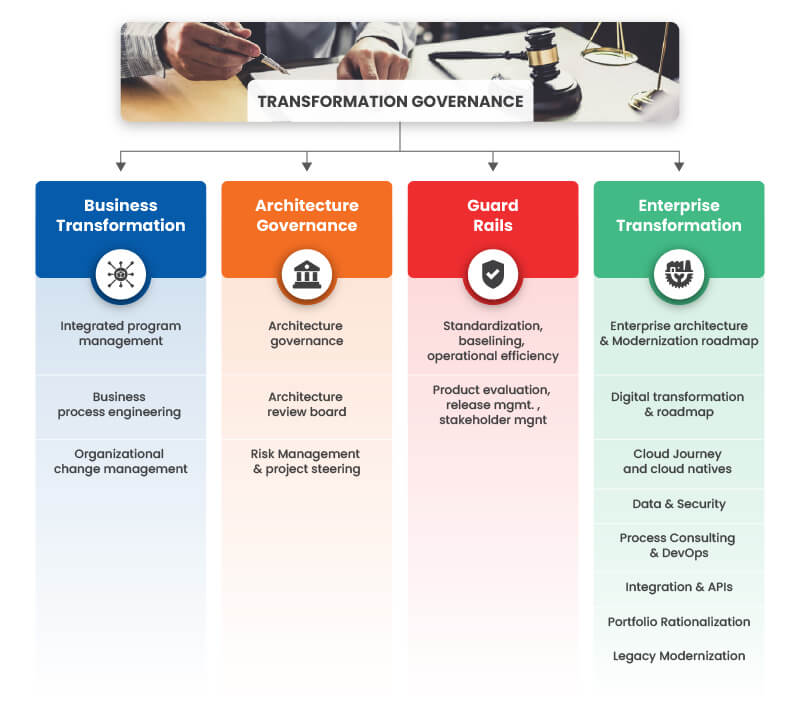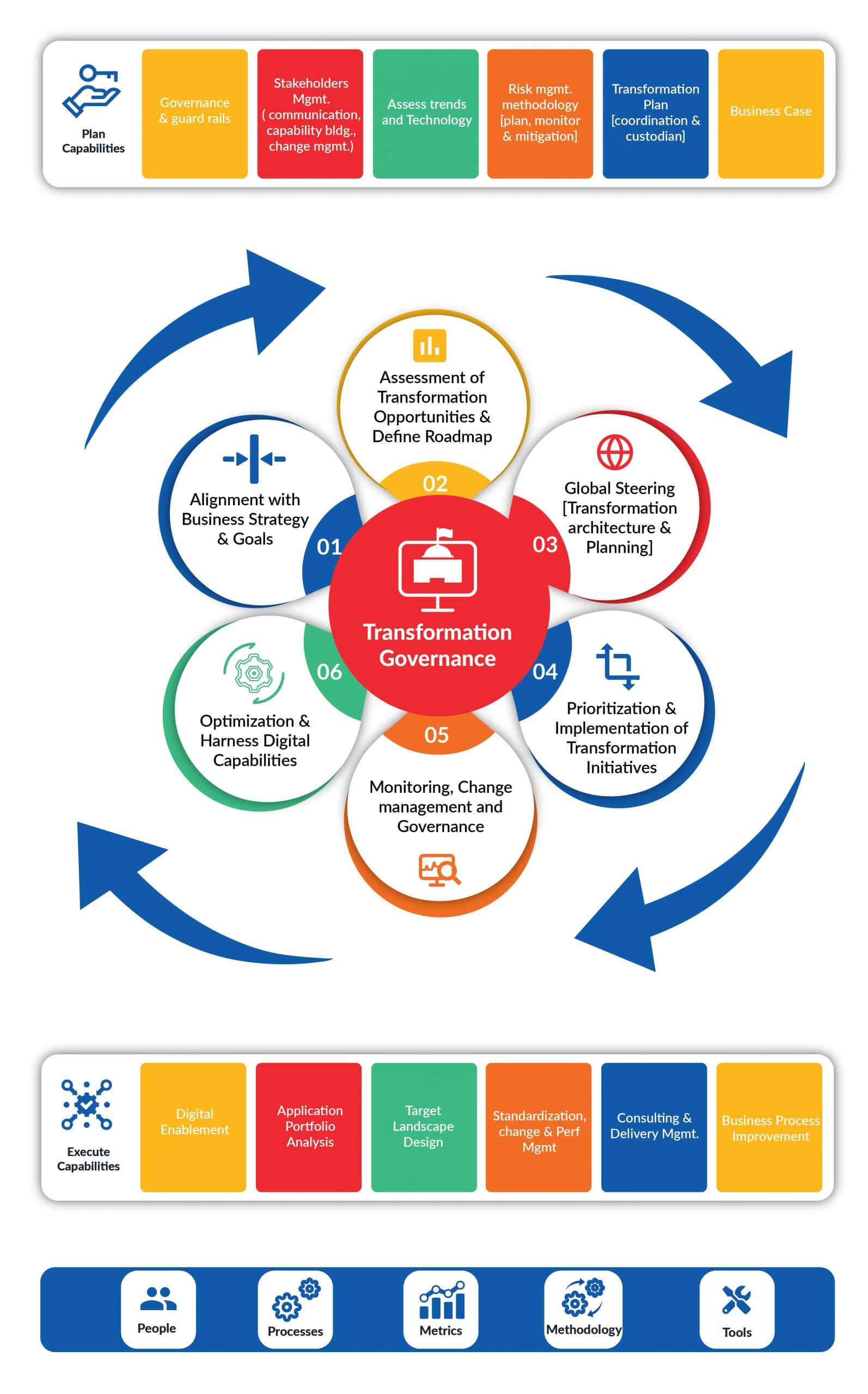A Big Four Accounting Firm reported that 96% of organizations were embarking on some phase of enterprise transformation. 47% [less than half] executives say they can realize sustainable value from the enterprise transformation.
34% of executives say their organization have failed to achieve the value they anticipated from the previous transformation initiatives.
- Failure to understand the complexity of the operating model
- Inability to innovate
- Missing the cultural connection
- Failure to take a “business at first” approach to technology
- Inability to execute
An Everest Group study revealed that approx. 73% of companies could not deliver business value from their digital transformation endeavors. Fatigue from continual change and lack of transformation governance attribute to these failures.
The need for Transformation Governance:

Transformation Governance ensures early alignment between business, finance, and delivery leaders, creating a strong tie between the value case and transformation execution. It operates in a “target state/outcome” model [where the business looks at where it needs to invest for new outcomes versus what has worked historically]. It drives (rather than tracking) with the right governance and execution. Transformation governance brings impacted stakeholders on the change journey so that a well-executed transformation delivers the desired business outcomes.
The digital transformation governance model provides the necessary foundation for a successful transformation, bringing together all aspects from vision to value realization. It enables organizations to manage multiple program and project management initiatives towards one common goal.
The transformation governance model helps drive complex initiatives on operational structures and the organization’s strategy. It is a critical link between the executive vision and the organization’s work. Any organization transforming will have a pipeline of improvements, subdivided into actions, owners, and dollars at stake.
What does it take to transform the organization and governance?

- Mindset: Everyone needs to adopt a customer-centric mindset
- People: Right people with the appropriate skills to help move the organization forward. This applies to technical skills (Digital, Cloud, DevOps) as well as leadership and communication skills
- Process: Agile, lean, or DevOps initiatives to help accelerate the transformation and improve cross-functional processes
- Technology: Leading edge to drive future growth. Governing digital transformation and emerging technologies
- Measurement: KPI, checkpoints, guard rails, etc.
- Go-To-Market: new edge digital selling and marketing
Who are involved in the transformation governance?
- Leadership team (CxO) – Sets the company vision and makes the strategic decisions related to people, process and technology
- Business – Business / functional / operational stake holders
- Sales – In-charge of delivering more personalized and seamless buying experience to customers
- Chief Architects / EAs – Application portfolio management., technology landscape, modernization & digital roadmap, guidelines, governance and data security
- IT / SMEs – IT team build and maintain the underlying technology
Transformation Governance Organization:

Transformation Governance enables organizations to manage multiple programs and project initiatives towards one common goal.

Enterprise Transformation Framework

Why DCT (Digital Core Transformation) to drive transformation governance?
- Core expertise in driving IT transformation with core modernization and EA consulting
- Competent go-to-market team with the offerings – Enterprise Architecture, Legacy Modernization, Cloud Native, Hybrid Integration and Data Modernization
- A team of 30+ members, including EAs, architects and SMEs
- Collaboration with the customers to create the overarching transformation design, which prioritizes and integrates multiple distinct initiatives, delivers the desired outcomes and is data-driven and focused on value
- An agile approach to help customers manage change and solve problems throughout the journey
- Strategic sourcing and third-party partnership solutions for efficient supply chain management, leading to increased cost savings and better risk management
Are you looking to embrace end-to-end digital transformation? Discover how Hexaware is helping future-ready enterprises lead from the front by re-engineering their core IT for competitive advantage. Check out our Digital Core Transformation offerings here.



















